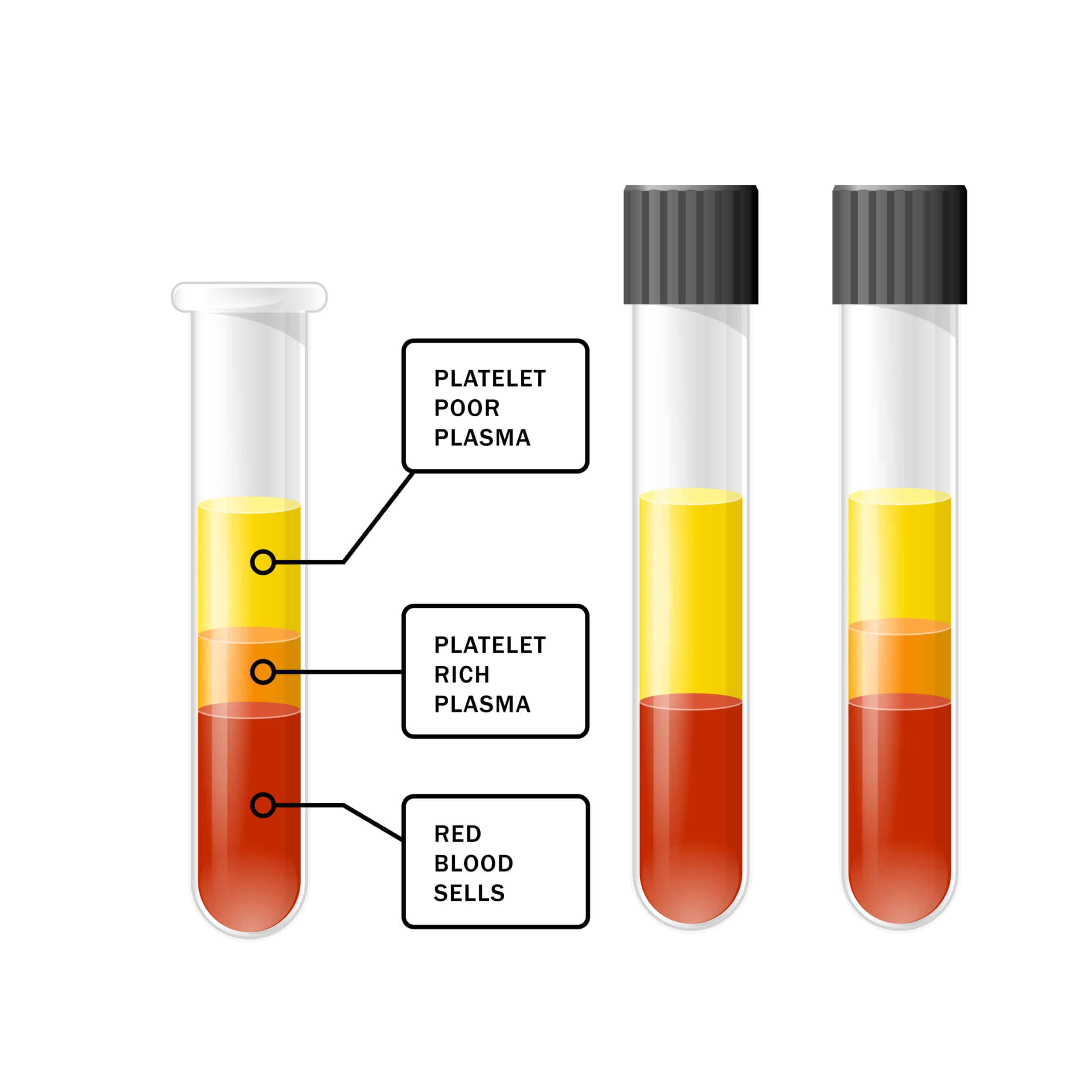Platelet-Rich Plasma (PRP) Injections
Platelet-Rich Plasma (PRP) Treatment: Harnessing the Power of Blood for Healing
Introduction
Platelet-Rich Plasma (PRP) treatment is a revolutionary medical technique that utilizes the body’s natural healing processes to treat various medical conditions. It has gained popularity in recent years for its potential to accelerate tissue repair and regeneration. In this educational article, we will explore the science behind PRP therapy, the equipment used, its clinical applications, outcomes, treatment steps, and offer guidelines for both pre-procedure and post-procedure care. We will also touch upon the future of PRP therapy and the ongoing research in this field.
Basic Science
Blood after separation of platelets in the centrifuge in test tube, PRP infographics, platelet-rich plasmaPRP treatment is grounded in the understanding of the body’s natural ability to heal itself. Blood is primarily composed of red blood cells, white blood cells, and platelets. Platelets play a crucial role in clotting and wound healing. PRP is obtained by drawing a small sample of the patient’s blood and then centrifuging it to concentrate the platelets. This concentrated plasma is rich in growth factors, cytokines, and proteins that stimulate tissue repair and regeneration. When injected into a damaged area, PRP promotes the body’s natural healing mechanisms, hastening the recovery process.
Types of Platelet Plasma Equipment
There are various methods and equipment used for preparing PRP. The two most common methods are:
1. Centrifugation: This method involves spinning the blood sample in a centrifuge to separate its components. The PRP layer is then collected and prepared for injection.
2. Apheresis: Apheresis machines directly extract a specific amount of blood and separate the platelets, which are then collected and processed for PRP.
Different equipment and protocols can lead to variations in PRP concentration and composition, which can influence treatment outcomes.
Clinical Use
PRP therapy is used across various medical fields, including:
1. Orthopedics: For the treatment of injuries such as tendonitis, ligament sprains, and arthritis.
2. Dermatology: For skin rejuvenation, hair restoration, and scar reduction.
3. Dentistry: In oral surgery, implantology, and periodontal procedures.
4. Sports Medicine: To aid in the recovery of athletes from injuries.
5. Ophthalmology: For certain eye conditions.
6. Chronic Wound Care: In non-healing wound management.
Outcomes
The outcomes of PRP treatment can vary depending on the condition being treated, the patient’s overall health, and the quality of the PRP preparation. Generally, patients can expect:
– Reduced pain and inflammation.
– Accelerated tissue repair and regeneration.
– Improved function and mobility.
– Long-term relief in some chronic conditions.
However, it’s important to note that PRP may not work for everyone, and results can vary from patient to patient.
Treatment Steps
Pre-Procedure Instructions:
1. Consultation: Discuss the procedure with a qualified healthcare provider, who will assess your suitability for PRP therapy.
2. Medication Review: Inform your healthcare provider about any medications or supplements you are taking, as some may need to be adjusted or temporarily stopped.
3. Hydration: Staying well-hydrated before the procedure helps with blood draw.
4. Avoid Alcohol: Refrain from consuming alcohol in the days leading up to the procedure.
Post-Procedure Instructions:
1. Rest: Give your body time to heal. Avoid strenuous activities immediately after the procedure.
2. Pain Management: You may experience mild discomfort or soreness at the injection site. Over-the-counter pain relievers can be used if recommended by your healthcare provider.
3. Follow-Up: Attend follow-up appointments as scheduled to monitor progress and make any necessary adjustments to your treatment plan.
4. Patience: PRP treatment may take time to show full effects. Follow your healthcare provider’s guidance for optimal results.
Future
The future of PRP therapy holds promise for further advancements. Ongoing research is exploring the potential of PRP in treating a wider range of medical conditions. Researchers are also working on refining the PRP preparation process to improve consistency and efficacy. As our understanding of PRP deepens, its applications may expand, offering even more hope for patients seeking natural, regenerative treatments.
In conclusion, Platelet-Rich Plasma therapy is a remarkable medical innovation that harnesses the body’s own healing powers. With the right equipment, proper clinical applications, and careful post-procedure care, PRP can offer an effective and minimally invasive treatment option for a variety of medical conditions. Its continued development and research promise a bright future for regenerative medicine.



